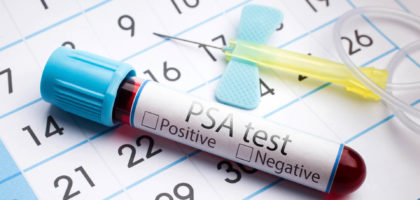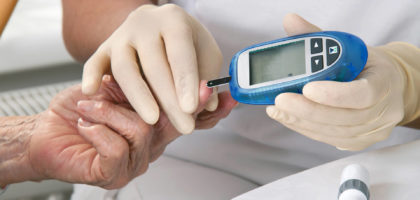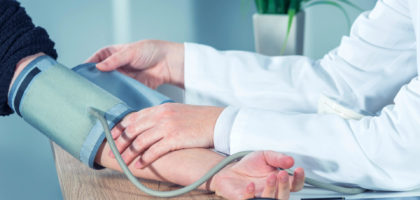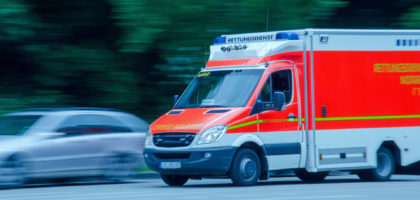Unser Experte für Sport und Gesundheit
Prof. Dr. med. Hans-G. Predel
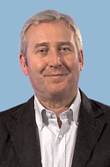
Institution und Position: Leiter des Instituts für Kreislaufforschung und Sportmedizin an der Deutschen Sporthochschule Köln. Professor (C4) für Präventive und Rehabilitative Sportmedizin der Universität Köln.
Stand: 14.03.2018
Die Mitschrift des Interviews mit Prof. Dr. med. Hans-G. Predel zum Thema “Sport und Gesundheit”
Welche Formen von Sport sind nützlich und welche nicht?
Das ist eine schwierige Frage. Es gibt eigentlich keine pauschale Antwort darauf, sondern die Antwort wäre: Für wen ist welcher Sport nützlich und welcher eben nicht. Aber generell kann man natürlich sagen, dass es eine Reihe von Sportarten gibt, die für sehr viele Menschen sehr nützlich, die sehr positiv wirken. Das sind die so genannten ausdauerorientierten Sportarten, die die Gelenke nicht so stark belasten. Hierzu zähle ich insbesondere das Biken (oder man kann auch sagen Fahrrad fahren) in allen Varianten, Straßenfahrrad fahren, aber auch das Natur-bezogenes Moutainbiking. Schwimmen ist sehr, sehr gesund für viele Menschen, das ist gar keine Frage. Auch viele Varianten des Spazieren Gehen, ob das klassische, in der Natur sich bewegen, Walken, oder das Nordic-Walking.
All das sind sehr günstige Sportarten. Weiterhin viele mannschaftsbezogene Sportarten, in denen auch die Ausdauerkomponente im Vordergrund steht. Kritischer muss man sicherlich Sportarten sehen, die einen sehr hohen Wettkampfcharakter aufweisen, die auch sehr viel Körperkontakt mit beinhalten. Da muss man verschiedene Kampfsportarten nennen, aber auch bestimmte Mannschaftssportarten, wie Rugby, American Football. Das sind sicherlich Sportarten, die für einige durchaus sinnvoll sein mögen, aber nicht im breitensportlichen Sinnen nützliche Effekte vermitteln. Auch durchaus mit positiven Aspekten versehen sind viele Varianten des Kraftsports heute. Hier haben wir mittlerweile so hervorragende Geräte, die es ermöglichen, den Kraftsport auch gelenkschonend durchzuführen. Wiederum umgekehrt: Alle Formen freier, intensiver Kraftsportentfaltung sind in Zeiten einer älter werdenden Bevölkerung mit allen Komplikationen, die das bedeutet für das muskuläre und skelettäre System, dann doch mit einer gewissen Vorsicht zu kommentieren. So sieht man, dass die verschiedenen Sportarten ihre Schwerpunkte haben, aber auch individualisiert beurteilt werden müssen.
Warum führt Sport zu mehr Wohlbefinden im Alltag?
Sport, wenn er richtig ausgeführt wird, führt zu einer deutlichen Verbesserung vieler körperlicher Funktionen, sei es Kraft, sei es Ausdauer, sei es Koordination oder Flexibilität. All das sind Funktionen, die wir brauchen, um unseren Alltag aktiv gestalten zu können. Also die Alltagskompetenz wir hierdurch verbessert. Des weiteren führt Sport bei den meisten Menschen zumindest zu einem deutlich gestiegenen Selbstwertgefühl. Das körperliche Selbstbild ist besser und deshalb bewegen wir uns auch selbstbewusster und freier im Alltag, in der Kommunikation mit unseren Mitmenschen und last but not least, hat Sport auch eine generell stimmungsbefördernde Wirkung. Es hat soziale Effekte: Wir führen Sport in Gruppen durch und das sind Dinge, die uns den Alltag sicherlich besser bewältigen lassen.
Welche Krankheiten kann man mit Sport vorbeugen?
Ich würde die Frage direkt umdrehen und fragen: Welche Erkrankung kann man nicht mit Sport vorbeugen? Es gibt kaum eine Erkrankung, wo Sport nicht eine positive, präventive Wirkung hat. Hier möchte ich herausheben die Herz-Kreislauferkrankungen, die Stoffwechselerkrankungen – Diabetes spielt hier eine ganz wichtige Rolle – und das geht bis hin zu Krebserkrankungen. Hier gibt es eine Reihe neuerer Forschungsergebnisse, die zeigen: Sport hat hier eine schützende Wirkung auf eine Vielzahl von Krebsformen.
Sport und geistige Fitness – wie hängt das zusammen?
Ganz spannendes Thema, es ist auch sehr im Fokus aktueller Forschungen. Wir wissen, dass Sport die Vernetzung von Gehirnbahnen sehr stark befördert. Sport unterstützt in entscheidendem Maße die kindliche Gehirnentwicklung zum einen. Kinder brauchen vielfältige Bewegung, um ihr Hirn überhaupt voll entwickeln zu können. Aber auch im Erwachsenenalter gibt es eine Reihe von mittlerweile wissenschaftlich sehr gut bewiesenen Effekten, die eben unsere intellektuellen, unsere geistigen Fähigkeiten deutlich unterstützen können. Und das geht bis ins hohe Alter. Hier werden wir in Zukunft sicherlich noch ganz spannende Fragen beantworten können.
Sollten auch Kinder Sport treiben und einfach nur herumtollen?
Sowohl, als auch. Kinder sollten natürlich ihrem freien Bewegungsdrang, ihrem natürlichen unbedingt folgen. Das heißt: unkoordiniertes Herumtollen ist eine tolle Sache. Toben – toben macht schlau. Das zeigen unsere Untersuchungen an Grundschulkindern. Aber natürlich sollten Kinder auch Sport treiben. Denn was Hänschen nicht lernt, lernt Hans nimmer mehr. Es ist ganz entscheidend, Kinder frühzeitig in sportliche Aktivitäten zu bringen. Das ist nicht nur für deren körperliche, sondern auch für die soziale und geistige Entwicklung eine ganz entscheidende Voraussetzung.
Welche Gesundheitsschäden können durch Sport entstehen?
Wie alles in der Medizin, hat auch Sport eine potentiell gefährdende Seite – das ist sozusagen die zweite Seite der Medaille. Sport kann Überbelastungen vermitteln. Es können Schädigungen des so genannten muskulo-skelettaren Systems auftreten. Sport kann aber auch das Herz-Kreislauf-System überstrapazieren – dann vor allem, wenn bereits Vorschädigungen vorliegen. Sport kann natürlich auch klassische Verletzungen aller Art – im Wettkampf vor allem – mit verursachen, so dass natürlich auch Sport eine Reihe von potentiellen Nebenwirkungen mit sich bringt.
Haben Marathon-Läufer ein höheres Herzinfarkt-Risiko?
Das ist eine ganz spannende Frage auch für die Sportmedizin. Nur einmal ein paar Zahlen: Wir haben 17 Mio. Freizeitläufer, allein in Deutschland. Wir haben etwa 200.000 Menschen in Deutschland, die einen Marathon laufen. Wir haben ca. 180 Marathonveranstaltungen (Marathonevents), die jährlich in Deutschland stattfinden. Die Frage, ob Marathon das Herz schädigen kann, kann ich zunächst einmal pauschal auf Basis ganz aktueller Untersuchungen wie folgt beantworten: Grundsätzlich, über alle Marathonläufer hinweg, haben wir tatsächlich kein erhöhtes Risiko.
Aber und jetzt kommen die entscheidenden Einschränkungen: Es gibt ein deutlich erhöhtes Risiko bei Männern jenseits der 40, die Marathon laufen, die vor allem eben nicht ausreichend medizinisch voruntersucht sind und nicht ausreichend vortrainiert sind. Und davon haben wir eine Menge. Das zeigen unsere Untersuchungen beim Berlin- und Köln-Marathon. Das ist die erste Einschränkung. Die zweite Einschränkung ist: Wenn Menschen bereits Vorschädigungen haben, die das Herz-Kreislaufsystem betreffen – also hohen Blutdruck, Fettstoffwechselstörung oder Diabetes – dann kann diese Marathon-Belastung sehr wohl auch das Herzinfarktrisiko erhöhen. Das heißt also, meine klare Antwort: Prinzipiell kein erhöhtes Risiko, statistisch betrachtet haben aber einzelne Kollektive von Marathonläufern durchaus ein erhöhtes Risiko. Und um die muss man sich gezielt kümmern.
Haben Fußballfans ein höheres Herzinfarkt-Risiko?
Hierzu gibt es einige Untersuchungen, die auch wissenschaftlich sauber erhoben worden sind und wir selbst haben ebenfalls Untersuchungen durchgeführt und man muss leider sagen: Fußballfans oder Menschen, die vor dem Fernseher Fußballereignisse mit verfolgen, haben eindeutig während der Übertragung selbst, aber auch schon am Tag davor und in den Stunden danach ein deutlich erhöhtes Herzinfarktrisiko. Die emotionale Belastung ist offenbar gerade bei Fußball so stark, dass tatsächlich hier Herzschäden auftreten können, die im schlimmsten Fall bis zum Herzinfarkt oder bis zum Kammerflimmern, bis zum Herztod führen können. Das ist leider ganz klar belegt.
Wie gesund ist Leistungssport?
Leistungssport – wie der Begriff schon sagt – zielt auf Leistung, eben auf Höchstleistung ab und dieses Abzielen auf Höchstleistung – was der persönlichen Motivation, dem Willen auch des Leistungssportlers oft entspricht – bedeutet, dass es in erster Linie darum geht, gesundheitliche Schäden durch den Leistungssport zu verhindern. Denn die Tatsache, dass man den Körper permanent in Grenzbereiche führt, bedeutet ein sicherlich grundsätzlich erhöhtes gesundheitliches Risiko. Nicht nur für unsere muskulären und knöchernen Strukturen, aber auch für das Herz-Kreislauf- und Stoffwechselsystem. Also, die Frage muss ganz klar dahin gehend fokussiert werden: Komme ich mit Leistungssport ohne gesundheitliche Gefahren durchs Leben? Und da gibt es Hinweise aus Untersuchungen, dass ausdauerorientierte Hochleistungssportler tatsächlich sogar eine bessere Prognose haben. Deren Lebensspanne ist länger als die von Nicht-Leistungssportlern. Ganz anderes mag die Sache aussehen in Leistungssportdisziplinen aus dem Kraftsportbereich. Das ist eine ganz andere Geschichte, aber noch einmal ganz klar: Beim Leistungssport steht für den Athleten nicht die Gesundheit, sondern als Ziel die Leistung im Vordergrund.
Wann hilft Sport gegen Demenz?
Auch hier gibt es ganz aktuelle Untersuchungen, die zeigen: Menschen, die regelmäßig, lebenslang sportlich aktiv sind, haben ein deutlich geringeres Demenz-Risiko. Aber auch die Vorstufen der Demenz, sogenannte kognitive Funktionsstörungen, werden durch regelmäßige sportliche Aktivitäten sehr günstig beeinflusst. Etwas anders sieht es aus, wenn bereits eine Demenz vorliegt. Da haben wir bisher keinen Beleg, dass Sport bei bereits dementen Menschen noch helfen kann. Deshalb hier die klare Botschaft: Sport muss wirklich präventiv eingesetzt werden, dann hilft er.
Hilft Sport zur Vorbeugung und bei der Behandlung von Krebs?
Zum einen hat Sport eine vorbeugende Wirkung für bestimmte Krebsformen. Belegt ist das für den sehr häufigen Dickdarmkrebs, für das Prostata-Karzinom beim Mann, aber auch für das Mamma-Karzinom, also den Brustkrebs der Frau. Und das sind sehr häufige Krebsformen. Hier hat Sport eine präventive, eine vorbeugende Wirkung. Bei bereits an Krebs Erkrankten hat Sport generell sehr günstige Effekte, was den weiteren Verlauf der Erkrankung angeht, vor allem in Zusammenhang mit der Chemotherapie. Diese Patienten sind ja oft sehr stark beeinträchtigt, insgesamt durch diese sehr belastende Therapie. Hier haben viele Untersuchungen gezeigt, dass eben Sport die Lebensqualität dieser Patienten, zum einen aber auch deren generellen körperlichen Gesamtzustand sehr günstig beeinflussen kann. Das heißt also vorbeugend für bestimmte Krebsformen ist belegt, als begleitende therapeutische Maßnahme fast für alle Krebsformen mittlerweile sehr interessant und zunehmend stark eingesetzt.
Ich habe Knieprobleme – kann ich dennoch Sport treiben?
Kommt drauf an welchen. Ich würde keinem Menschen mit Knieproblemen raten jetzt mit dem Joggen anzufangen, das wäre sicherlich nicht hilfreich. Aber Knieprobleme, die selbstverständlich erst einmal orthopädisch abgeklärt werden sollten, Knieprobleme sind ja ein sehr häufiges gesundheitliches Beschwerdebild. Sie reagieren zum Beispiel sehr günstig auf Fahrradfahren, auf bestimmte Formen von Kräftigungssport, wo die Muskulatur gerade im Oberschenkelbreich das Gelenk sehr günstig stabilisieren kann und damit auch Kniebeschwerden teilweise zumindest abmildern kann. Also Menschen, die Kniebeschwerden haben, sollten auf jeden Fall sportlich aktiv werden, aber nicht ohne vorherige medizinische Untersuchung und nicht ohne Anleitung durch einen Physiotherapeuten oder geschulten Sport- oder Bewegungstherapeuten.
Sind Pulsuhren nützlich oder nur Spielerei?
Die sind sehr nützlich. Pulsuhren helfen sehr stark, die Belastungsintensität zu steuern. Hier muss man wissen, dass sehr viele Menschen heute verlernt haben, auf die Signale ihres Körpers direkt zu hören. Das heißt, gerade bei Sporteinsteigern brauchen wir externe Signalgeber und hier ist die Pulsangabe ganz ganz wichtig. Wir können aufgrund von vorangegangenen Leistungstestungen den Sporttreibenden sogenannte Trainings¬herzfrequenz¬bereiche angeben, in denen sie in optimaler Weise trainieren. Das kann man als Ungeübter eigentlich nur eben mit Hilfe dieser Herzfrequenzmesser oder Pulsuhren wirklich sicher machen. Sinnvoll ist allerdings, wenn diese Uhren Signalgeber haben, mit denen man zum Beispiel bestimmte Herzfrequenzkorridore angeben kann. Beispiel: die Trainingsherzfrequenz sollte zwischen 120 und 130 bei Patient XYZ liegen. Dann kann er sich hier eben auch entsprechend mit Warnsignalen über die Pulsuhr sehr gut selbst steuern. Sie sind also viel mehr als eine Spielerei, sondern durchaus sehr nützlich.
Was gibt es Neues im Bereich Sport und Gesundheit?
Nun da gibt es eine ganze Menge von spannenden Trends. Ich will zwei, drei herausgreifen. Zum einen die verschiedenen Bewegungssensoren, die mittlerweile gerade auch im Zusammenhang mit den Smartphones auf den Markt kommen. Hier wird es sicherlich vielfältige neue Entwicklungen geben, viele sind schon auf dem Markt, die uns helfen, ganz gezielt unser Bewegungsprogramm durchzuführen. Also Individualisierung des Sports, Steuerung mit neuen Techniken.
Dann ein sehr großes Feld im Zusammenhang mit der demografischen Entwicklung, wir werden ja nun mal gottseidank immer älter, das heißt wir müssen auch ältere Menschen zum Sport nicht nur bringen, bewegen, sondern eben dafür sorgen, dass der Sport gesundheitlich günstig durchgeführt werden kann und hier baut sich im Augenblick eine ganz neue Industrie auf, die zum Beispiel Krafttrainingsgeräte für ältere Menschen entwickeln, damit diese ihren Krafttrainingssport tatsächlich ohne Risiken durchführen können. Das betrifft in besonderem Maße auch die große Palette der Rückenleiden, wo man sehr schnell vieles falsch machen kann, wenn man nicht richtig trainiert. Hier gibt es ganz tolle neue Entwicklungen.
Last but not least Kinder und Jugendliche, die auch immer mehr in den Fokus von neuen innovativen und spielerisch anregenden Neuentwicklungen kommen, um auch diese zu motivieren. Beispiel: die Spielplattformen, die einen sehr hohen Aufforderungscharakter haben und immer wieder hier auch Kinder und Jugendliche aufs Neue motivieren wollen.
Welche Innovationen erwarten Sie in den nächsten Jahren?
Ich vermute dass sich einerseits die technologischen Hilfen weiter verbessern werden. Das heißt also die verschiedenen Bewegungssensoren, die Bewegungs-Apps – diese Dinge werden sich weiterentwickeln, werden sich vernetzen. Es werden neue Entwicklungen kommen, gerade im Hinblick auf bewegungsunterstützende Maßnahmen für Menschen mit Einschränkungen des Bewegungsapparats. Es werden neue Formen von Therapiekonzepten entwickelt werden für Menschen mit chronischen Erkrankungen.
Die große Herausforderung unserer Zivilisationserkrankung ist ja nach wie vor ungelöst: was machen wir mit den vielen Bluthochdruckpatienten, mit den vielen Diabetikern, mit den vielen Menschen, die krankhaftes Übergewicht haben. Wie bewegen wir die? Wie bringen wir sie überhaupt in Bewegung? Ich denke, dass wir noch viele Entwicklungen erwarten dürfen, die sich eben mit diesem Klientel beschäftigen werden.
Wie gesund ist Jogging?
Jogging ist grundsätzlich sehr gesund, denn es ist eine ausdauerorientierte Bewegungsform, eine Urbewegungsform des Menschen, wenn sie denn richtig durchgeführt wird. Das ist der eine Punkt. Wir müssen also technisch richtig laufen, wir brauchen die richten Hilfsmittel, das heißt also individuell ausgewähltes Schuhwerk mit der richtigen Dämpfung, dann müssen wir in der richtigen Intensität laufen, die richtige Dosierung finden. Dann ist Jogging fantastisch.
Jogging hat allerdings auch Einschränkungen. Jogging kann zu Überforderung führen. Da haben wir viele Beispiele. Überforderung, die sowohl unsere unteren Extremitäten, die Kniegelenke, die Hüftgelenke überstrapazieren, die zu Rückenschmerzen auch führen können. Und Jogging kann auch das Herz-Kreislauf-System überstrapazieren, das heißt also hier brauchen wir wirkliche auch eben eine individualisierte Hinführung.
Hilft Sport bei Rückenbeschwerden?
Rückenbeschwerden gehören zu den häufigsten Beschwerdebildern in unserer heutigen Welt. In Deutschland mit die häufigste Ursache beispielsweise für Arbeitsausfälle, aber auch für eingeschränkte Lebensqualität. Rückenbeschwerden basieren sehr oft auf muskulären Dysbalancen, auf Fehlhaltungen und natürlich auch auf Übergewichtigkeit in Verbindung mit Bewegungsmangel. Das heißt, hier kann Sport ursächlich ansetzen, einerseits durch gezielte Kräftigung sowohl der Rücken- als auch der Bauchmuskulatur. Das vergessen viele. Die Bauchmuskulatur ist ganz wichtig auch in der Behandlung von Rückenbeschwerden. Es können aber auch die knöchernen Strukturen wieder stabilisiert werden. All das verlangt aber gerade im Zusammenhang mit einem gezielten Rückentraining professionelle Unterstützung. Hier kann man nicht einfach selbst einsteigen, sondern braucht wirklich konsequente Beratung, dann hat Sport und Bewegungsphysiotherapie – so dieser gesamte Komplex – eine unabdingbare und auch ganz entscheidende Wirkung in der Behandlung von Rückenschmerzen und auch Rückenbeschwerden.
Ich bin übergewichtig – kann ich trotzdem Sport treiben?
Ja, auch übergewichtige oder sehr übergewichtige, fettleibige Menschen können Sport treiben. sie müssen aber genau auswählen welchen Sport. Ich würde beispielsweise keinem übergewichtigen oder sehr übergewichtige Menschen (Beispiel Body-Mass-Index über 30) noch den Einstieg in das Joggen zunächst empfehlen. Hier empfehlen sich Sportarten, die das Körpergewicht tragen, zum Beispiel Fahrrad fahren ist hervorragend oder schwimmen – auch sehr gut. Und zusätzlich benötige ich, wenn ich ein deutliches Übergewicht habe, flankierende Maßnahmen um die Muskultur wieder aufzubauen, denn der Überschuss an Fettgewebe gerade am Bauchbereich ist fast immer begleitet durch einen Mangel an Muskulatur. Hier hilft nur eine gezielte Kombination aus geeigneten Ausdauersportarten in Verbindung mit muskulären Kräftigungsaktivitäten. Dann ist Sport sozusagen ein Muss für den fettleibigen Patienten.
Infos zur Person
Das Thema Sport hat mich mein Leben lang begleitet. Früher als Kind und Jugendlicher war ich selbst aktiv (Handballer und Leichtathlet). Im Laufe des Studiums habe ich mich dann zunehmend auch mit den theoretischen Fragen des Sportes beschäftigt, im Rahmen des Medizinstudiums einerseits, andererseits eben im Rahmen des Sportstudiums. Dann im weiteren Verlauf war ich zunächst Assistenzarzt an der Uniklinik in Bonn und Zürich. Hier habe ich die Themenfelder Gesundheitssport-Prävention im Zusammenhang mit vielfältigen internistischen Erkrankungen besonders bearbeitet. Schließlich war ich Stipendiat der Deutschen Forschungsgemeinschaft in den Vereinigten Staaten und zwar in San Francisco an der Westcoast. Da war das Thema Sport hoch präsent an den Hochschulen, aber eben auch an der Klinik. Hier habe ich auch wissenschaftlich in diesem Schnittfeld arbeiten können, um dann nach Rückkehr aus den USA eben an der Deutschen Sporthochschule einerseits als Facharzt für Innere Medizin, andererseits eben als Sportmediziner, mich dann voll und ganz diesen Themen zu widmen. Seit 2000 habe ich die Professur für Sportmedizin und leite das Institut für Kreislaufforschung und Sportmedizin, wo mich natürlich rein beruflich sowieso, aber weiterhin auch in meinem ganzen persönlichen Interesse genau eben diese Bereiche, Sport, Gesundheit, und Prävention vorantreiben.
Infos zur Klinik
Unser Institut beschäftigt sich seit über 50 Jahren mit allen Fragen die mit dem Themenfeld Gesundheit und sportlicher, sei es leistungssportlicher oder freizeit-, gesundheitssportlicher Aktivität zu tun haben. Wir betreuen Leistungssportler genauso wie Menschen die im Freizeit- und Breitensport beschäftigt sind, aber auch Patienten, die eben Bewegungstherapie betreiben. Das heißt also wir decken das gesamte Spektrum im Schnittfeld “Gesundheit, Bewegung, Sport” ab.
Lebenslauf:
Ausbildung:
| 1975 – 1976 | Einjähriger High-School-Aufenthalt in den USA im Rahmen eines von der Bundesregierung geförderten Austauschprogrammes |
| 1978 –1984 | Studium der Humanmedizin in Aachen und Bonn |
| 1979 –1979 | Studienaufenthalt an der John Hopkins University Baltimore, USA gefördert durch den Deutschen Akademischen Austauschdienst |
| 1985 –1985 | Staatsexamen, Approbation und Promotion |
| 1985 | US-Staatsexamen für Medizin (ECFMG) |
Beruflicher Werdegang:
| 1984 – 1985 | Praktisches Jahr an den Universitätskliniken Zürich:Innere Medizin |
| 1985 – 1990 | Wissenschaftlicher Mitarbeiter an der Mediz. Univ. Klinik Bonn und Ausbildung im Fach „Innere Medizin“ |
| 1990 – 1992 | Forschungsstipendium der Deutschen Forschungsgemeinschaft (DFG): Wissenschaftliche Tätigkeiten an der Univ. of California, San Francisco / Stanford, USA (Profs. J. Baxter, D. Gardner) sowie an der Univ. Klinik Basel (Prof. F. Bühler). |
| Seit 1992 | Oberarzt am Institut für Kreislaufforschung und Sportmedizin, Deutsche Sporthochschule Köln (Prof. R. Rost) – Internist des Olympiastützpunktes Köln/Bonn/Leverkusen |
| 1993 | Facharztprüfung zum „Arzt für Innere Medizin“ |
| 1994 | Zusatzbezeichnung „Sportmedizin“ |
| 1998 | Habilitation im Fach “Sportmedizin” |
| seit 2000 | Leiter des Instituts für Kreislaufforschung und Sportmedizin |
| seit 2001 | Professur für Präventive und Rehabilitative Sportmedizin |
| 2002-2008 | Prorektor der Deutschen Sporthochschule |
| 2007 | Präsident des 40. Deutschen Sportmedizin-Kongresses |
| seit 2008 | Mitglied des Vorstandes der Deutschen Hochdruckgesellschaft |
| 2011 | Präsident des wissenschaftlichen Kongresses 2011 der Deutschen Gesellschaft für Hypertonie und Prävention |
Mitgliedschaften:
Publikationen:
Totzeck M, Hendgen-Cotta UB, Rammos C, Frommke LM, Knackstedt C, Predel HG, Kelm M, Rassaf T. Higher endogenous nitrite levels are associated with superior exercise capacity in highly trained athletes. Nitric Oxide. 2012 May 18;27(2):75-81. [Epub ahead of print] PubMed PMID: 22609879.
Predel HG, Hamelsky S, Gold M, Giannetti B. Efficacy and Safety of Diclofenac Diethylamine 2.32% Gel in Acute Ankle Sprain. Med Sci Sports Exerc. 2012 Apr 19. [Epub ahead of print] PubMed PMID: 22525762.
Predel HG. [Prevention and therapy of hypertension: let us take advantage of the new chances]. MMW Fortschr Med. 2011 Nov 10;153(45):36. German. PubMed PMID: 22428337.
Albus C, Bjarnson-Wehrens B, Gysan DB, Herold G, Schneider CA, zu Eulenburg C, Predel HG; PräFord-Studiengruppe. [The effects of multimodal intervention for the primary prevention of cardiovascular diseases on depression, anxiety, and Type-D pattern: initial results of the randomized controlled PreFord trial]. Herz. 2012 Feb;37(1):59-62. German. PubMed PMID: 22095021.
Mengden T, Predel HG. [The concept of early vascular aging – a story from EVA and ADAM]. Dtsch Med Wochenschr. 2011 Nov;136(46):2347. Epub 2011 Nov 8. German. PubMed PMID: 22068443.
Gouni-Berthold I, Schulte DM, Krone W, Lapointe JF, Lemieux P, Predel HG, Berthold HK. The whey fermentation product malleable protein matrix decreases TAG concentrations in patients with the metabolic syndrome: a randomised placebo-controlled trial. Br J Nutr. 2012 Jun;107(11):1694-706. PubMed PMID: 21996130.
Geyer R, Predel HG, Wolber T, Mellwig KP, Schmied C. Pre-competition cardiac screening in professional handball players – setting up at the EHF European Handball Championship 2010 in Austria. Wien Med Wochenschr. 2011 Aug;161(15-16):387-93. PubMed PMID: 21953430.
Koehler K, Braun H, Achtzehn S, Hildebrand U, Predel HG, Mester J, Schänzer W. Iron status in elite young athletes: gender-dependent influences of diet and exercise. Eur J Appl Physiol. 2012 Feb;112(2):513-23. Epub 2011 May 19. PubMed PMID: 21594695.
Predel HG. [Hypertension and sports: do we take the opportunity?]. MMW Fortschr Med. 2009 Aug 20;151(34-35):59-61. German. PubMed PMID: 19771797.
Giannetti BM, Staiger C, Bulitta M, Predel HG. Efficacy and safety of comfrey root extract ointment in the treatment of acute upper or lower back pain: results of a double-blind, randomised, placebo controlled, multicentre trial. Br J Sports Med. 2010 Jul;44(9):637-41. Epub 2009 May 21. PubMed PMID: 19460762.
Weisser B, Preuss M, Predel HG. [Physical activity for prevention and therapy of internal diseases in the elderly]. Med Klin (Munich). 2009 Apr 15;104(4):296-302. Review. German. PubMed PMID: 19399388.
Plisiene J, Blumberg A, Haager G, Knackstedt C, Latsch J, Norra C, Arndt M, Tuerk S, Heussen N, Kelm M, Predel HG, Schauerte P. Moderate physical exercise: a simplified approach for ventricular rate control in older patients with atrial fibrillation. Clin Res Cardiol. 2008 Nov;97(11):820-6. Epub 2008 Jul 21. PubMed PMID: 18648726.
Graf C, Koch B, Falkowski G, Jouck S, Christ H, Staudenmaier K, Tokarski W, Gerber A, Predel HG, Dordel S. School-based prevention: effects on obesity and physical performance after 4 years. J Sports Sci. 2008 Aug;26(10):987-94. PubMed PMID: 18608843.
Predel HG. [Hypertension and physical exertion: how much is enough?]. MMW Fortschr Med. 2008 Jun 12;150(24):34-5, 37. German. PubMed PMID: 18605058.
Berg A, Berg A, Frey I, König D, Predel HG. Exercise based lifestyle intervention in obese adults: results of the intervention study m.o.B.I.L.I.s. Dtsch Arztebl Int. 2008 Mar;105(11):197-203. Epub 2008 Mar 14. PubMed PMID: 19629198; PubMed Central PMCID: PMC2696747.
Predel HG. [A different way: not talking about weight with the overweight heart patient (interview by Dr. Jochen Aumiller)]. MMW Fortschr Med. 2007 Dec 6;149(49-50):19. German. PubMed PMID: 18236977.
Vogeser M, König D, Frey I, Predel HG, Parhofer KG, Berg A. Fasting serum insulin and the homeostasis model of insulin resistance (HOMA-IR) in the monitoring of lifestyle interventions in obese persons. Clin Biochem. 2007 Sep;40(13-14):964-8. Epub 2007 Jun 2. PubMed PMID: 17583689.
Schneider CA, Herold G, Gysan D, Albus C, Bjarnason-Wehrens B, Predel HG. Prevalence of cardiovascular risk factors in middle-aged type 2 diabetic automobile employees assessed at the workplace–the Praeford study. J Occup Environ Med. 2007 May;49(5):481-3. PubMed PMID: 17495690.
Predel HG. [The potential of non-drug treatment is much neglected. Consider yourself a lifestyle manager!]. MMW Fortschr Med. 2006 Nov 23;148(47):29. German. PubMed PMID: 17168184.
Predel HG, Schramm T. [Exercise in arterial hypertension]. Herz. 2006 Sep;31(6):525-30. German. PubMed PMID: 17036183.
Graf C, Dordel S, Tokarski W, Predel HG. [Overweight and obesity in childhood and adolescence. Is prevention possible?]. Herz. 2006 Sep;31(6):507-13. German. PubMed PMID: 17036180.
Sack S, Predel HG. [Heart and sports]. Herz. 2006 Sep;31(6):497-9. German. PubMed PMID: 17036178.
Schramm T, Predel HG. [Volume and electrolyte disturbances in endurance sport]. Internist (Berl). 2006 Nov;47(11):1145-50. Review. German. PubMed PMID: 17009039.
Graf C, Koch B, Bjarnason-Wehrens B, Sreeram N, Brockmeier K, Tokarski W, Dordel S, Predel HG. Who benefits from intervention in, as opposed to screening of, overweight and obese children? Cardiol Young. 2006 Oct;16(5):474-80. PubMed PMID: 16984699.
Predel HG. [To lower blood pressure without medication]. MMW Fortschr Med. 2006 Aug 17;148(33-34):34-6. Review. German. PubMed PMID: 16981383.
Schiffer T, Strüder HK, Predel HG, Hollmann W. Effects of mild leg exercise in a seated position on haemostatic parameters under normobaric hypoxic conditions. Can J Appl Physiol. 2005 Dec;30(6):708-22. PubMed PMID: 16485521.
Predel HG, Giannetti B, Koll R, Bulitta M, Staiger C. Efficacy of a comfrey root extract ointment in comparison to a diclofenac gel in the treatment of ankle distortions: results of an observer-blind, randomized, multicenter study. Phytomedicine. 2005 Nov;12(10):707-14. PubMed PMID: 16323288.
Plange N, Kaup M, Daneljan L, Predel HG, Remky A, Arend O. 24-h blood pressure monitoring in normal tension glaucoma: night-time blood pressure variability. J Hum Hypertens. 2006 Feb;20(2):137-42. PubMed PMID: 16239898.
Predel HG, Tokarski W. [Influence of physical activity on human health]. Bundesgesundheitsblatt Gesundheitsforschung Gesundheitsschutz. 2005 Aug;48(8):833-40. German. PubMed PMID: 16086192.
Graf C, Rost SV, Koch B, Heinen S, Falkowski G, Dordel S, Bjarnason-Wehrens B, Sreeram N, Brockmeier K, Christ H, Predel HG. Data from the StEP TWO programme showing the effect on blood pressure and different parameters for obesity in overweight and obese primary school children. Cardiol Young. 2005 Jun;15(3):291-8. PubMed PMID: 15865832.
Koll R, Buhr M, Dieter R, Pabst H, Predel HG, Petrowicz O, Giannetti B, Klingenburg S, Staiger C. Efficacy and tolerance of a comfrey root extract (Extr. Rad. Symphyti) in the treatment of ankle distorsions: results of a multicenter, randomized, placebo-controlled, double-blind study. Phytomedicine. 2004 Sep;11(6):470-7. PubMed PMID: 15500257.
Graf C, Koch B, Dordel S, Schindler-Marlow S, Icks A, Schüller A, Bjarnason-Wehrens B, Tokarski W, Predel HG. Physical activity, leisure habits and obesity in first-grade children. Eur J Cardiovasc Prev Rehabil. 2004 Aug;11(4):284-90. PubMed PMID: 15292761.
Latsch J, Predel HG. [Cardiac arrhythmia in sports]. Herz. 2004 Jun;29(4):420-5. Review. German. PubMed PMID: 15241542.
Predel HG, Koll R, Pabst H, Dieter R, Gallacchi G, Giannetti B, Bulitta M, Heidecker JL, Mueller EA. Diclofenac patch for topical treatment of acute impact injuries: a randomised, double blind, placebo controlled, multicentre study. Br J Sports Med. 2004 Jun;38(3):318-23. PubMed PMID: 15155436; PubMed Central PMCID: PMC1724805.
Gysan DB, Latsch J, Bjarnason-Wehrens B, Albus C, Falkowski G, Herold G, Mey E, Heinzler R, Montiel G, Schneider CA, Stützer H, Türk S, Weisbrod M, Predel HG. [The PreFord Study. A prospective cohort study to evaluate the risk of a cardiovascular event (overall-collective) as well as a prospective, randomized, controlled, multicentre clinical intervention study (high-risk-collective) on primary prevention of cardiovascular diseases in the Ford Motor Company employees in Germany]. Z Kardiol. 2004 Feb;93(2):131-6. German. PubMed PMID: 14963679.
Graf C, Koch B, Kretschmann-Kandel E, Falkowski G, Christ H, Coburger S, Lehmacher W, Bjarnason-Wehrens B, Platen P, Tokarski W, Predel HG, Dordel S. Correlation between BMI, leisure habits and motor abilities in childhood (CHILT-project). Int J Obes Relat Metab Disord. 2004 Jan;28(1):22-6. PubMed PMID:14652619.
Graf C, Böhm M, Predel HG, Bjarnason-Wehrens B. [Arteriosclerosis – a lifelong challenge]. Herz. 2002 Dec;27(8):760-4. Review. German. PubMed PMID: 12574893.
Predel HG. [Fit instead of fat. Exercise as therapy for overweight hypertensive patients]. MMW Fortschr Med. 2002 Jul 11;144(27-28):43-4. German. PubMed PMID: 12198879.
Predel HG. [An exercise program for the hypertensive patient. Leaving hypertension behind]. MMW Fortschr Med. 2002 May 9;144(19):34-7. German. PubMed PMID: 12116550.
Diet F, Graf C, Mahnke N, Wassmer G, Predel HG, Palma-Hohmann I, Rost R, Böhm M. ACE and angiotensinogen gene genotypes and left ventricular mass in athletes. Eur J Clin Invest. 2001 Oct;31(10):836-42. PubMed PMID: 11737220.
Predel HG, Mainka W, Schillings W, Knigge H, Montiel J, Fallois J, Agrawal R, Schramm T, Graf C, Giannetti BM, Bjarnason-Wehrens B, Prinz U, Rost RE. Integrated effects of the vasodilating beta-blocker nebivolol on exercise performance, energy metabolism, cardiovascular and neurohormonal parameters in physically active patients with arterial hypertension. J Hum Hypertens. 2001 Oct;15(10):715-21. PubMed PMID: 11607802.
Predel HG. [Which antihypertensive drugs for physically active hypertensive patients?]. MMW Fortschr Med. 2001 Jun 14;143(24):43-4. German. PubMed PMID: 11469019.
Bjarnason-Wehrens B, Predel HG, Graf C, Rost R. [Ambulatory phase II cardiac rehabilitation (Cologne model). 3 year outcome after completion of the intervention]. MMW Fortschr Med. 1999 Sep 30;141(39):44-5. German. PubMed PMID: 10897984.
Bjarnason-Wehrens B, Predel HG, Graf C, Rost R. [Phase II ambulatory cardiac rehabilitation (Cologne model). 3 year results after conclusion of the intervention]. MMW Fortschr Med. 2000 Jan 20;142(3 Suppl):173-7. German. PubMed PMID: 10783608.
Bjarnason-Wehrens B, Predel HG, Graf C, Rost R. [Clinical follow-up 6 months after ambulatory/partial inpatient after-care rehabilitation. Further results of the Cologne model of ambulatory cardiac phase II rehabilitation]. Herz. 1999 Apr;24 Suppl 1:73-9. German. PubMed PMID: 10372312.
Bjarnason-Wehrens B, Predel HG, Graf C, Rost R. [Ambulatory cardiac phase II rehabilitation–“the Cologne model”–including 3-year-outcome after termination of rehabilitation]. Herz. 1999 Apr;24 Suppl 1:9-23. German. PubMed PMID: 10372304.
Bjarnason-Wehrens B, Predel HG, Graf C, Günther D, Rost R. [Improvement of physical performance and aerobic capacity mediated by a novel 4–week ambulatory cardiac rehabilitation program]. Z Kardiol. 1999 Feb;88(2):113-22. German. PubMed PMID: 10209832.
Predel HG, Knigge H, Prinz U, Kramer HJ, Stalleicken D, Rost RE. Exercise increases endothelin-1 plasma concentrations in patients with coronary artery disease: modulatory role of LDL cholesterol and of pentaerithrityltetranitrate. J Cardiovasc Pharmacol. 1995;26 Suppl 3:S497-501. PubMed PMID: 8587457.
Predel HG, Knigge H, Prinz U, Stalleicken D, Kramer HJ, Rost RE. The exercise-induced increase in plasma levels of endothelin-1 is enhanced in patients with atherosclerotic coronary artery disease. Modulation by pentaerithrityltetranitrat (PETN). Agents Actions Suppl. 1995;45:219-25. PubMed PMID: 7717184.
Predel HG, Kramer HJ. Lisinopril versus slow release nifedipine in patients with essential hypertension: a multicentre study. J Hum Hypertens. 1994 Oct;8(10):777-80. PubMed PMID: 7837215.
Predel HG, Rohden C, Heine O, Prinz U, Rost RE. ACE inhibition and physical exercise: studies on physical work capacity, energy metabolism, and maximum oxygen uptake in well-trained, healthy subjects. J Cardiovasc Pharmacol. 1994;23 Suppl 1:S25-8. PubMed PMID: 7519693.
Predel HG, Rohden C, Heine O, Rost RE. Influence of the nonsulfhydryl angiotensin-converting enzyme inhibitor trandolapril on lipid and carbohydrate metabolism related to exercise capacity in healthy subjects. Am Heart J. 1993 May;125(5 Pt 2):1532-5. PubMed PMID: 8480625.
Predel HG, Yang Z, von Segesser L, Turina M, Bühler FR, Lüscher TF. Implications of pulsatile stretch on growth of saphenous vein and mammary artery smooth muscle. Lancet. 1992 Oct 10;340(8824):878-9. PubMed PMID: 1357299.
Predel HG, Kuklinski P, Kramer HJ. Intranasal application of atrial natriuretic peptide and 1-deamino-d-arginine vasopressin in healthy volunteers. Hemodynamic, hormonal, and renal excretory effects. Am J Hypertens. 1992 Sep;5(9):657-60. PubMed PMID: 1329853.
Meyer-Lehnert H, Bayer T, Predel HG, Glänzer K, Kramer HJ. Effects of atrial natriuretic peptide on systemic and renal hemodynamics and renal excretory function in patients with chronic renal failure. Klin Wochenschr. 1991 Nov 26;69(19):895-903. PubMed PMID: 1667425.
Predel HG, Schulte-Vels O, Glänzer K, Meyer-Lehnert H, Kramer HJ. Atrial natriuretic peptide in patients with essential hypertension. Hemodynamic, renal, and hormonal responses. Am J Hypertens. 1991 Nov;4(11):871-9. PubMed PMID: 1665067.
Kramer HJ, Meyer-Lehnert H, Michel H, Predel HG. Endogenous natriuretic and ouabain-like factors. Their roles in body fluid volume and blood pressure regulation. Am J Hypertens. 1991 Jan;4(1 Pt 1):81-9. Review. PubMed PMID: 1848764.
Predel HG, Schulte-Vels O, Sorger M, Glänzer K, Geller C, Kramer HJ. Atrial natriuretic peptide in patients with diabetes mellitus type I. Effects on systemic and renal hemodynamics and renal excretory function. Am J Hypertens. 1990 Sep;3(9):674-81. PubMed PMID: 2145873.
Predel HG, Meyer-Lehnert H, Bäcker A, Stelkens H, Kramer HJ. Plasma concentrations of endothelin in patients with abnormal vascular reactivity. Effects of ergometric exercise and acute saline loading. Life Sci. 1990;47(20):1837-43. PubMed PMID: 2259271.
Kramer HJ, Predel HG, Meyer-Lehnert H. Angiotensin-converting enzyme inhibition in patients with essential hypertension. Clin Physiol Biochem. 1990;8 Suppl 1:16-24. Review. PubMed PMID: 2257720.
Kramer HJ, Glänzer K, Meyer-Lehnert H, Mohaupt M, Predel HG. Kinin- and non-kinin-mediated interactions of converting enzyme inhibitors with vasoactive hormones. J Cardiovasc Pharmacol. 1990;15 Suppl 6:S91-8. Review. PubMed PMID: 1697369.
Meyer-Lehnert H, Wanning C, Predel HG, Bäcker A, Stelkens H, Kramer HJ. Effects of endothelin on sodium transport mechanisms: potential role in cellular Ca2+ mobilization. Biochem Biophys Res Commun. 1989 Aug 30;163(1):458-65. PubMed PMID: 2549995.
Predel HG, Christ F, Vetter H. [Recurrent thrombophlebitis, weakness]. Schweiz Rundsch Med Prax. 1989 May 2;78(18):532-4. German. PubMed PMID: 2657969.
Juergens UR, Predel HG, Vetter H. [Urticaria, pruritus]. Schweiz Rundsch Med Prax. 1989 Apr 4;78(14):403-5. German. PubMed PMID: 2727516.
Predel HG, Kipnowski J, Meyer-Lehnert H, Arendt RM, Kramer HJ. Human atrial natriuretic peptide in non-dialyzed patients with chronic renal failure. Clin Nephrol. 1989 Mar;31(3):150-5. PubMed PMID: 2523267.
Predel HG, Kipnowski J, Bäcker A, Stelkens H, Jürgens U, Düsing R, Kramer HJ. [Elevated plasma levels and heterogeneity of human atrial natriuretic peptide in patients with progressive chronic renal failure]. Z Kardiol. 1988;77 Suppl 2:65-71. German. PubMed PMID: 2970177.
Düsing R, Kayser G, Wagner S, Scherf H, Glänzer K, Predel HG, Kramer HJ. Baroreflex setting and sensitivity in normal subjects: effects of pharmacologic inhibition of the angiotensin I converting enzyme. Am J Cardiol. 1987 Apr 24;59(10):50D-54D. PubMed PMID: 3034033.
Predel HG, Düsing R, Bäcker A, Kipnowski J, Kramer HJ. Combined treatment of severe essential hypertension with the new angiotensin converting enzyme inhibitor ramipril. Am J Cardiol. 1987 Apr 24;59(10):143D-148D. PubMed PMID: 3034023.
Predel HG, Bäcker A, Kipnowski J, Düsing R, Kramer HJ. Relationship of plasma concentrations of human atrial natriuretic peptide to renal function and blood pressure in patients with progressive chronic renal failure. Klin Wochenschr. 1987;65 Suppl 8:127-32. PubMed PMID: 2955161.
Kramer HJ, Kipnowski J, Stekle B, Bäcker A, Predel HG, Düsing R. Studies on the tubular effects of atrial extract and of atriopeptin III in conscious rats. Klin Wochenschr. 1986;64 Suppl 6:31-6. PubMed PMID: 2948059.


